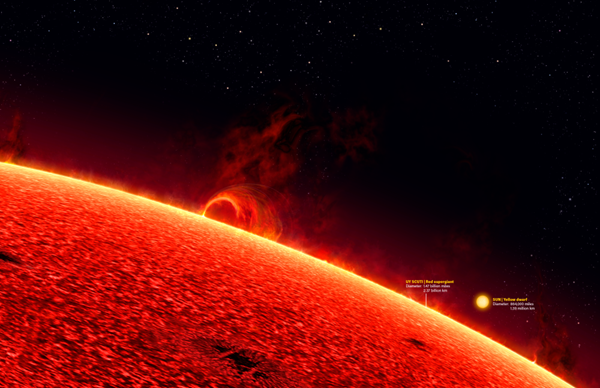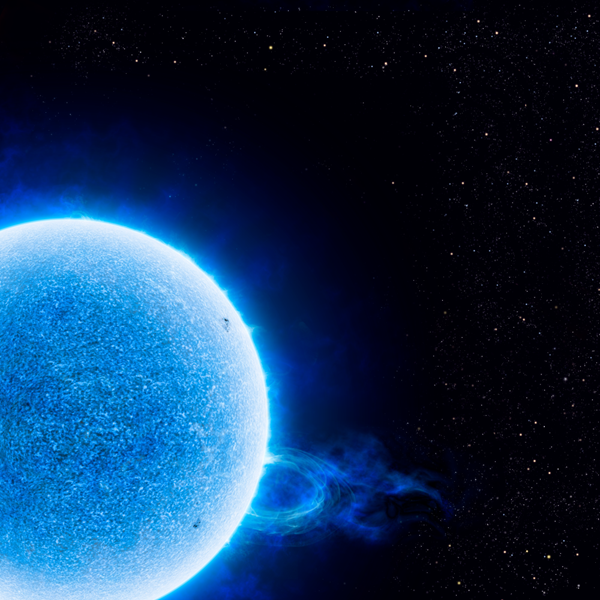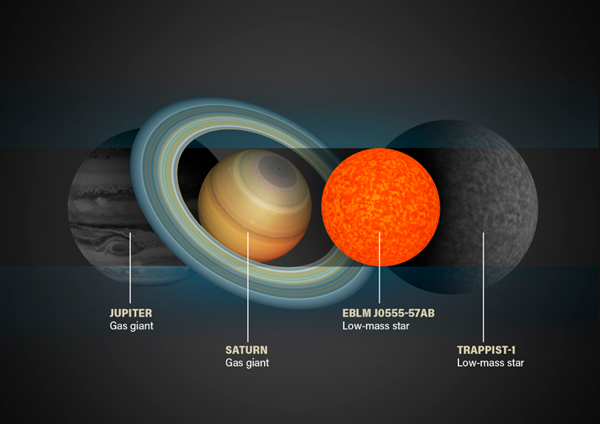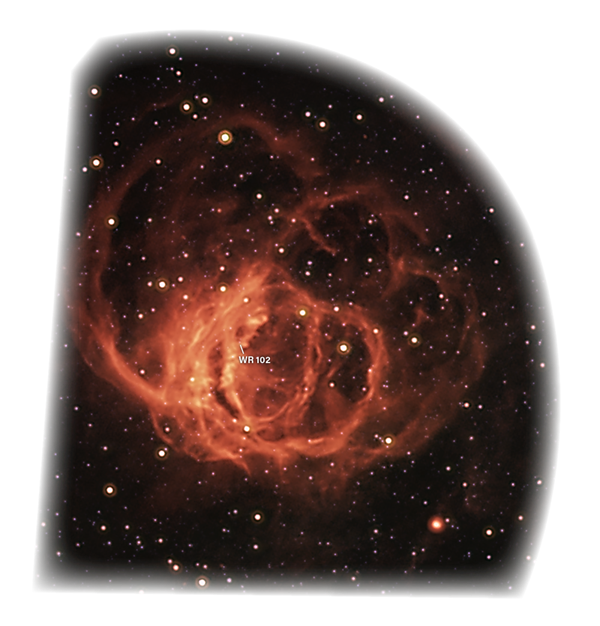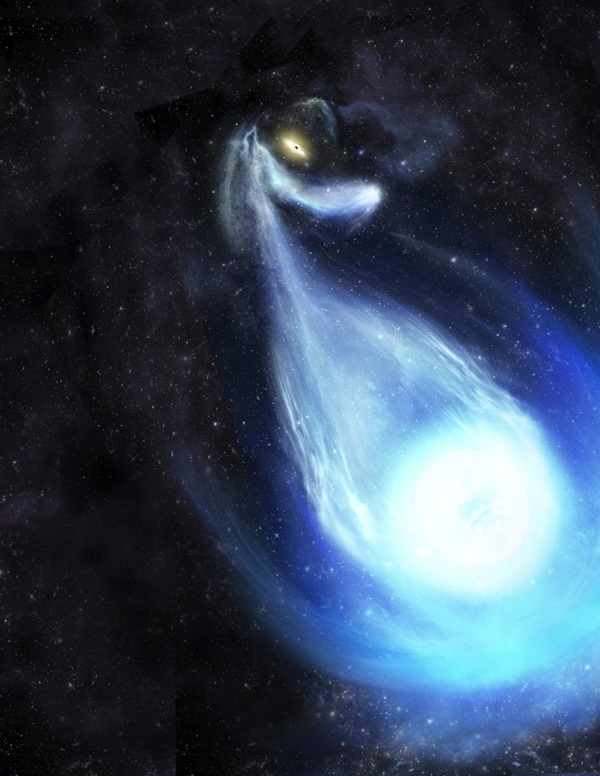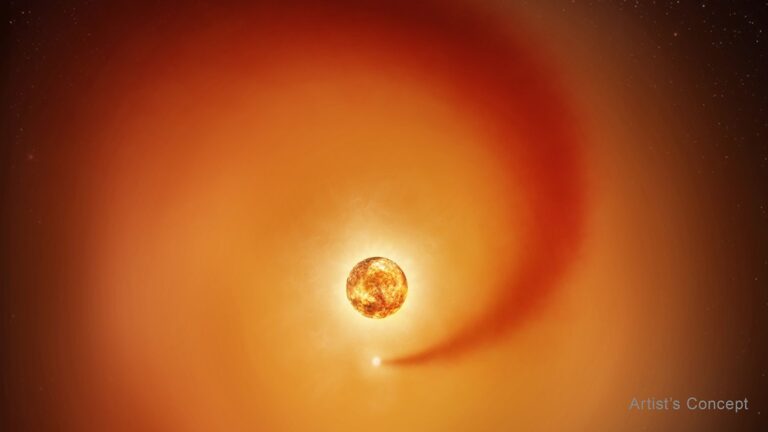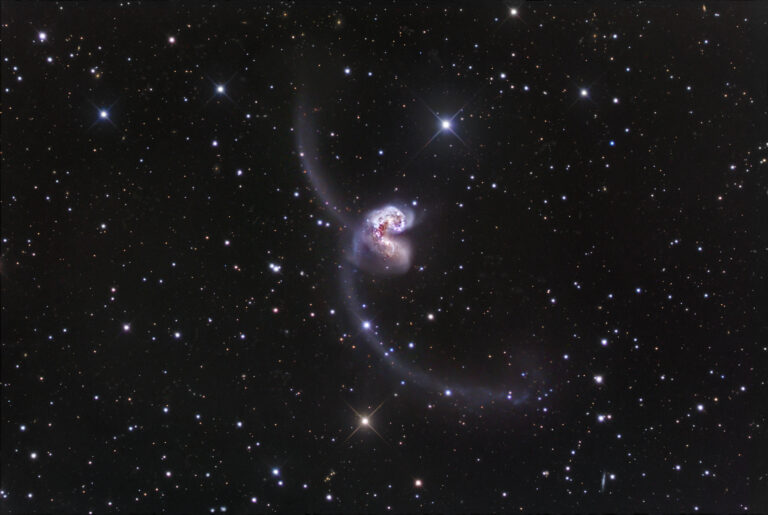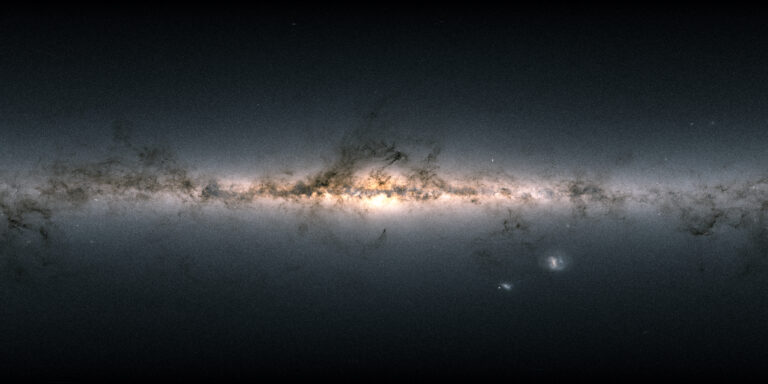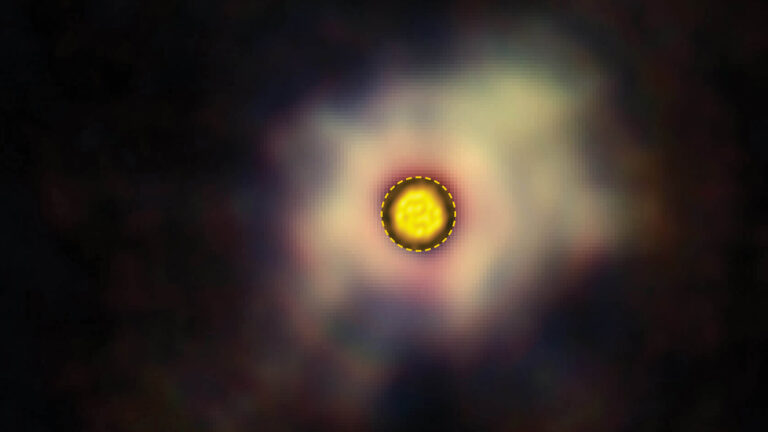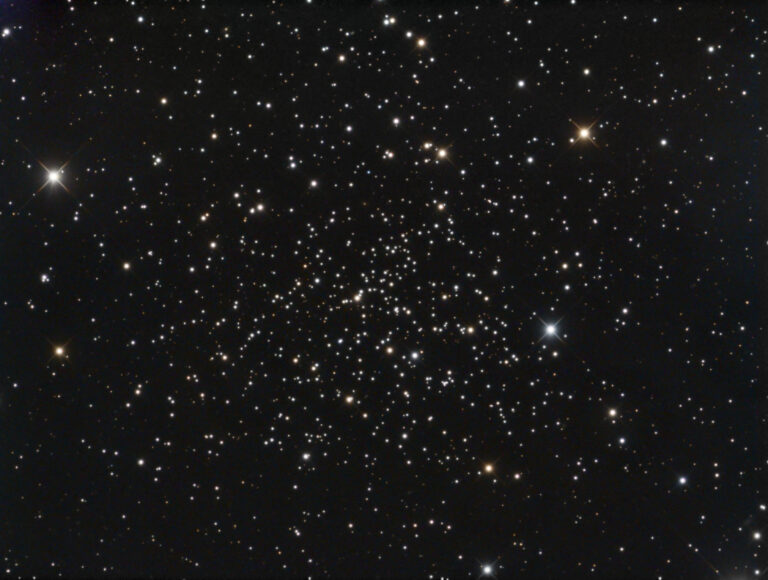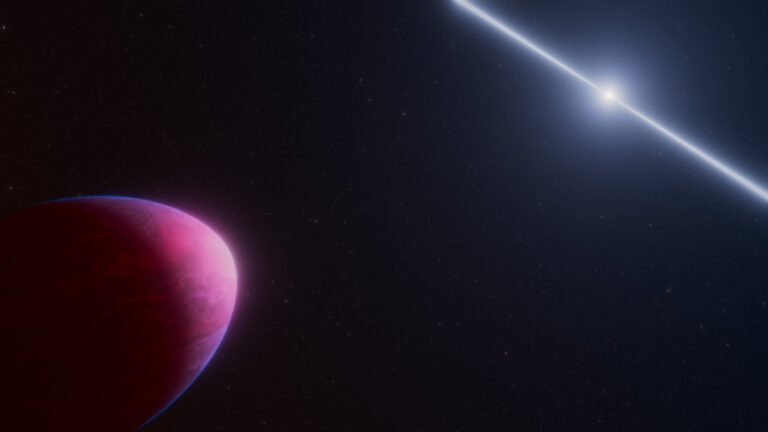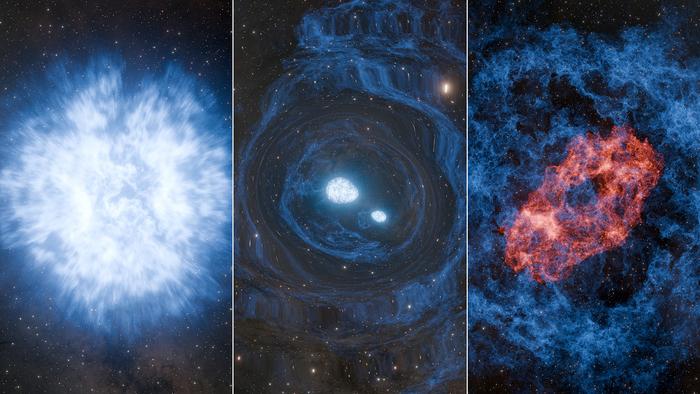Key Takeaways:
- UY Scuti is identified as the largest known star, approximately 1700 times the Sun's width, and is classified as a variable red supergiant exhibiting pulsations.
- RMC 136a1 is designated as the most massive known star, exceeding 300 solar masses, despite being only about 30 times the Sun's width; it's a luminous Wolf-Rayet star with powerful stellar winds.
- EBLM J0555-57Ab is noted as one of the smallest known stars, only slightly larger than Saturn, nearing the mass limit for sustained hydrogen fusion, highlighting the boundary between stars and brown dwarfs.
- WR 102 is characterized as the hottest known star, a rare WO-type Wolf-Rayet star with a surface temperature over 35 times that of the Sun, experiencing significant mass loss and predicted to undergo a supernova within the next 2000 years.
That’s the picturesque life that most stars live. But just like people, some stars have wildly different experiences. So, let’s do a quick review of some of the universe’s most extreme stars.
The biggest: UY Scuti
Just like in the DC Universe, sometimes the clearest way for astronomers to express something is truly extraordinary is to add the prefix super. It’s the case with Superman, as well as with supergiant stars — a fitting category for the largest known star in the universe, UY Scuti.
One day, the Sun will become a red giant. But if it had started its life with a dozen or so times its current mass, it could have eventually evolved into a red supergiant. (UY Scuti has already shed a lot of mass.) The biggest of these stars, sometimes called hypergiants, can swell to more than 1,000 times the size of the Sun. But UY Scuti, located near the center of the Milky Way in the constellation Scutum, is around 1,700 times the Sun’s width.
In 1860, astronomers at Bonn Observatory in Germany first cataloged UY Scuti as part of a star survey. But later, researchers noticed UY Scuti’s brightness changes over a period of about 740 days, leading them to reclassify it as a variable star. Some of these stars vary in brightness for external reasons, such as being eclipsed by another star or clouds of gas and dust from our vantage point. However, intrinsic variables like UY Scuti experience physical changes within, such as pulsations. In the case of UY Scuti, it varies in brightness because it’s constantly yo-yoing in terms of size — making exact measurements of its girth a challenge.
But like any red supergiant — including Betelgeuse — UY Scuti is destined to end its life with a bang. After exhausting the helium fuel in its core, it will ferociously forge increasingly heavy elements. And as long as UY Scuti doesn’t expel too much mass over the course of its remaining life, it will eventually start producing iron.
Making iron is a death sentence for stars. Unlike when it combines lighter elements, when a star forces two iron nuclei together, it doesn’t release any energy; it instead takes energy away from the environment. This causes a runaway collapse where the star no longer generates enough outward pressure to keep it from imploding under its own gravity.
The end result? A powerful core-collapse (type II) supernova that will finally — albeit briefly — make UY Scuti visible to the naked eye from Earth.
The most massive: RMC 136a1
Looks can be deceiving. Just because a star is a certain size doesn’t mean it has a certain mass. That’s absolutely the case with the most massive known star in the universe — RMC 136a1 — which packs a lot of heft into a surprisingly slim frame. Although thought to be more than 300 times the mass of our Sun, RMC 136a1 is only about 30 times as wide as our home star.
Located in the Milky Way’s largest satellite galaxy, the Large Magellanic Cloud, RMC 136a1 is just one of many blazing stars that’s ionizing the gas within NGC 2070. This huge open star cluster lies in the heart of the Tarantula Nebula, which is the brightest star-forming region in our galactic neighborhood. Thanks to Hubble Space Telescope observations, astronomers know RMC 136a1 is just one of more than 200 bright, massive stars in the immediate area, all found within a cluster called RMC 136. However, RMC 136a1 is the brightest of these beacons. In addition to holding the title for the most massive star, RMC 136a1 also takes the crown for the most luminous star.
Although the exact age of this stellar heavyweight is still uncertain, according to a 2016 study, RMC 136a1 could be as young as a few hundred thousand to a million years old, so it’s thought to still be burning hydrogen in its core. And because RMC 136a1 is a rare Wolf-Rayet star, it’s incredibly hot, chock-full of heavy elements, and sports extremely powerful stellar winds that are blowing off its outer layers.
These stellar winds are so powerful — reaching a velocity of around 5.8 million mph (9.4 million km/h) — that by the end of its life, the star is expected to expel enough gas to end up weighing just over 50 solar masses. However, that’s still plenty big enough to produce an astounding supernova. After all, the progenitor of Supernova 1987A, also located in the Large Magellanic Cloud, was only about 20 solar masses.
The smallest: EBLM J0555-57Ab
When it comes to stars, size matters.
If a star is exceptionally massive, it gobbles up its fuel, causing it to live fast and die hard. However, if a star is small and light, it has a slow metabolism, allowing it to live an extremely long life. But just how small can a star be? Well, EBLM J0555-57Ab is right at the limit.
At just 85 times the mass of Jupiter and a sliver wider than Saturn, EBLM J0555-57Ab skirts the lower boundary of what it takes to be a star.
“Our discovery reveals how small stars can be,” lead author Alexander Boetticher of the University of Cambridge said in a press release after finding the diminutive star in 2017. “Had the star formed with only a slightly lower mass, the fusion reaction of hydrogen in its core could not be sustained, and the star would instead have transformed into a brown dwarf.”
Although not well understood, brown dwarfs are not-quite-planets, not-quite-stars whose cores can only fuse a heavy form of hydrogen called deuterium, as well as possibly lithium. “Understanding the boundary that separates stars from brown dwarfs will improve our understanding of how both form and evolve,” Serge Dieterich of the Carnegie Institution for Science, an astronomer who studies the smallest stars, said in a statement.
EBLM J0555-57Ab may be tiny, but there are other stars out there that compare with its puny mass. For instance, the star TRAPPIST-1, which hosts at least seven rocky planets, tips the scales at 0.089 M⊙ — just a little more massive than EBLM J0555-57Ab. And because stars with less than 25 percent the Sun’s mass are the most common type of stars and excellent candidates for hosting Earth-sized planets, learning more about the lives of the smallest stars may help researchers uncover potentially habitable, Earth-like planets around them.
The hottest: WR 102
WHILE STARS MAY not follow the exact ratio set by this quote from the 6th-century-b.c. Chinese work Tao Te Ching, the gist holds true. The faster a star burns through its fuel, the shorter its life. And this is surely the case for Wolf-Rayet stars. These stars not only burn incredibly hot and bright, but their stellar winds also blast much of their potential fuel into space. The hottest known star, WR 102, is one such Wolf-Rayet, sporting a surface temperature more than 35 times hotter than the Sun.
Like Baskin-Robbins, Wolf-Rayet stars come in a variety of flavors. The most massive star, RMC 136a1, has a spectral type of WN, meaning it’s rich in ionized nitrogen as a result of rapidly converting hydrogen to helium in its fiery core via the C-N-O cycle.
However, the hottest star, WR 102, is an especially rare WO-type Wolf-Rayet, which is a late-stage star that has a surface heavily enriched with ionized oxygen. All said, astronomers only know of about 10 WO-type Wolf-Rayet stars in the entire universe.
Even for a Wolf-Rayet star, WR 102 has intense stellar winds. Currently, they are blowing about a Sun’s worth of mass from the star’s surface every 100,000 years. That means WR 102 is losing several hundred million times more mass each year than the Sun. Although that may not seem like much for a massive star, keep in mind that at this rate, WR 102 would be completely gone in less than 2 million years. But who can wait that long?
Astronomers are interested in WR 102 not just because of its exceptionally hellish surface temperature and rapid mass loss, but also because the star is a prime candidate to go supernova in the relatively near future. In a 2015 paper that explored how much time a variety of WO-type Wolf-Rayets have left before exploding as supernovae, WR 102 was found to have the worst prognosis.
According to the authors: “WR 102 is a post-core helium burning star and has a remaining lifetime of less than 2,000 years.”
The fastest: S5-HVS1
The Sun zips through space at a brisk 490,000 mph (790,000 km/h) relative to the Milky Way. That’s fast, but it’s nothing to crow about. Instead, the bragging rights for the fastest known star (that’s not a white dwarf) belong to a speed demon known as S5-HVS1. This middle-aged, hypervelocity star is fleeing our galaxy at more than 3.9 million mph (6.3 million km/h). For reference, that’s about 0.6 percent the speed of light.
Astronomers first found the star streaking through the southern constellation Grus in 2019. After tracing its orbit back in time, they quickly realized it is coming from the center of the Milky Way, near our roughly 4-million-solar-mass supermassive black hole, Sagittarius A*.
“This is super exciting, as we have long suspected that black holes can eject stars with very high velocities. However, we never had an unambiguous association of such a fast star with the galactic center,” Sergey Koposov of Carnegie Mellon University, lead author of the study, said in a press release. “We think the black hole ejected the star with a speed of thousands of kilometers per second about 5 million years ago. This ejection happened at the time when humanity’s ancestors were just learning to walk on two feet.”
Though single now, researchers suspect S5-HVS1 wasn’t always alone. The evidence suggests the star was ejected thanks to a process called the Hills mechanism, which was outlined some three decades ago by astronomer Jack Hills. The idea is that S5-HVS1 was once part of a binary system that tangoed with Sagittarius A*. When the stellar pair ventured too close, the black hole captured the companion star, releasing S5-HSV1 from its binary dance and flinging it through space.
“My favorite part of this discovery is thinking about where this star came from and where it’s going,” co-author Alex Ji said. “It was born in one of the craziest places in the universe, near a supermassive black hole with lots of other nearby star friends; but it’s going to leave our galaxy and die all alone, out in the middle of nowhere. Quite a fall from grace.”
That may not be an ideal life for a star, but at least it didn’t suffer the fate of its companion.

